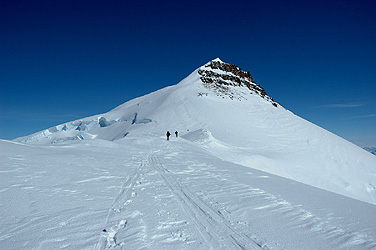Hvitserk
- Hvitserk, Gunnbjørnfjeld (Gunnbjornfjeld)
- 3694 m
- Primary factor 3694 m
- Location: North 68:55.170, West 029:53.912 (GPS on the summit)
- East Greenland
- Greenland HP
- Highest in The Arctic
- Difficulty YDS class 3, French Alpine PD.
- Climbed May 17. 2004.
